When we talk about mummies and pyramids, what comes to everyone’s mind is Egypt. The ancient Egyptian civilization was famous for many things, but mostly for gold, attire, magnificent architecture, and the pharaohs. But trade was one of the major drivers of the Egyptian economy from the earliest of times. One of the major trading centers for Egypt was the Syrian city of Kadesh, which connected trade routes from the region of Mesopotamia, the Hittite empire in Anatolia, and Egypt. That’s why the mighty ruler of Egypt, Ramses II eagerly wanted to capture the land including Kadesh for Egyptian commerce and for the deliberate expansion of Egypt into Syria. For this reason, there had been a long-term struggle between the Egyptians and their rivals in the region, the Hittites. Before Ramses II, his father and many previous rulers wanted to solve this conflict to make Egypt safe from foreign attack. After the banishing of the most recent invaders, the Hyksos, the Egyptian rulers of the New Kingdom tried to expand Egypt’s borders, but those attempts only led to territorial conflicts. Ramses II was determined to overcome these conflicts, and what resulted was the Battle of Kadesh with the Hittites.
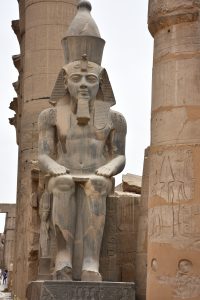
The Threat of the Hittites
From the second millennium to around 1530 BCE, the Anatolian Hittites grew in power and replaced Babylonia as the most powerful in the region, and then they began targeting Egypt’s strength. Many threatening letters from the Hittites were sent to Pharaoh Akhenaton, but he failed to reply to them. After that, General Horemheb campaigned for Akhenaton in struggles with the Hittites, but was unsuccessful. By the time of Tutankhamun, the Hittites had become more powerful and reinforced that power all the way to the borders of Egypt. Later, the father of Ramses, Seti I, started a war in Anatolia with the Hittites in order to get back the northern provinces that were now under the Hittites’ control. Later Seti I captured Kadesh for Egypt but it was taken back by the Hittite King Muwatalli II. Now as ruler of the nineteenth dynasty, Ramses II, who ruled for 66 years and 2 months, had to deal with the incursion of Kadesh and drive away the Hittites. But the Hittite troops were prepared early and camped near the Orontes river, at Kadesh.1
The Battle
During the fifth year of his reign, young Ramses started his journey towards the city of Kadesh in Syria from Per-Ramesses, which is also called House of Ramses. Because the Hittites were attacking the trade route destined for Egyp, it became much more of a threat rather than an annoyance. Before the battle, Ramses went twice to take control of some coastal lands near the Nile delta where the Sherdans were, who were allies of Hittites, according to Ramses II. At that time, Muwatalli II, the son of Mursilis II, was the Hittite king.2
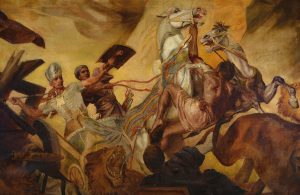
After Ramses II conquered the kingdom of Amun, the vassals of Egyptians drew the attention of the king of the Hittites, Muwatalli II, and Muwatalli realized that Ramses’ next move would be an attack on Kadesh. Therefore, the forces of the Hittites went to Kadesh quickly, and started preparations before Ramses II’s troops arrived there. The Battle of Kadesh took place in 1274 B.C.E. In this battle, Ramses II had a very strong and well-trained army, which was divided into six divisions with troops concentrated in four divisions named in the honor of Egyptian gods: Amun, Ra, Ptah, and Seth. Here in each division, there was a combined arms unit of 9000 men, which also included bowmen and chariot infantry. However, in the 5th group, there was Pharaoh’s guard and the last called Nireen, which consisted of Canaanite mercenaries. The Egyptian army was armed with javelins and short swords and their base was infantry. The dress coat of the army for safeguard was close-fitting helmets and mailed tunics made from natty. Beside each man in the army was a shield made of ox-hide over a wooden frame. Two thousand chariots were equally distributed in the first four divisions of Ramses’s army, but the chariots had limited capabilities for harassing the enemy and they were unable to squash the opponent group army.3
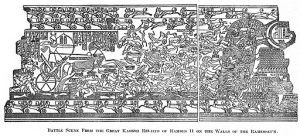
Inside each chariot was a driver with a shield, and a skirmisher armed with javelins and a bow. The Hittites armament had archers, which were used to firing from chariots. But those chariots were heavy, which not only made them slow but also imbalanced. At last, the great battle took place when Ramses II with his guard and the Oman division started their march toward Kadesh. But they never expected the army of the Hittites to be so near; unfortunately, the better ones got captured and Ramses II got informed that the army of Muwatalli was near Aleppo, which was 200 kilometers away. When Hittite spies were beaten, captured, and forced to talk, there was a conversation between Pharaoh Ramses and those spies:
“When they had been brought before Pharaoh, His Majesty asked, ‘Who are you?’ They replied, ‘We belong to the king of Hatti. He has sent us to spy on you.’ Then His Majesty said to them, ‘Where is he, the enemy from Hatti? I had heard that he was in the land of Khaleb, north of Tunip.’ They replied to His Majesty, ‘Lo, the king of Hatti has already arrived, together with the many countries who are supporting him…. They are armed with their infantry and their chariots. They have their weapons of war at the ready. They are more numerous than the grains of sand on the beach. Behold, they stand equipped and ready for battle behind the old city of Kadesh.” 4
This was a precarious trap by Muwatallis for Ramses’ army, which was led by two Bedouin spies of the Hittites. The brother of the Hittite King, Hattusili III, led the hidden army of Hittites near the eastern bank of the Orontes river. Then in the Bucha Valley, west of the Orontes river, the Egyptian troops set up camp according to Ramses’ II order. The spies also mentioned that the Hittites were planning to attack Ramses from behind, when he started the siege of Kadesh. After hearing from captives, Ramses sent his messengers to all other divisions with orders to head towards the main camp. Then the fight between the two groups began. When the nearest Raw division of Egyptians was planning for battle, at that moment they got attacked by 2000 Hittite chariots close to the settlement. Then the Hittites went south of Kadesh where the Egyptian army was unprepared for the battle. The Egyptian army could not form their division, and suddenly one of their marching columns got crushed by the Hittites’ chariots and the division withdrew from the battlefield.5
After that, the direction of the Hittites was towards the north; in the meantime, some chariots of Egyptians informed the camp about the attack of Hittites. Unfortunately it was late because the eastern part of Egyptian camp was attacked already from the side by Hittites, which was notified by the Amun division to Ramses. After the first success of the Hittites, some of them were overwhelmed with joy for their next victory, which was the reason some chariots entered the camp of Ramses II from the west. They started destroying camps violently, which in return made their chariots heavier. Somehow they could not move forward and by the order of Ramses, the guards and some warriors in the Raw division reached in a hurry to hold defense again the Hittites. Meanwhile, the Pharaoh, with all of his chariots and groups, used the eastern gate to leave the camp in a hurry. Finally, this group moved to the north and again to the west; they ended up behind the chariots of the Hittites. Then those Hittite chariots found that they were surrounded by the whole army of Ramses. It was regretful to the Egyptians, because they were unable to capture those Hittites because of the archers they used to break the envelopment.
Although the Hittite chariots left by breaking the Egyptian barrier, their horses were tired and the chariots were heavy. From behind, the Egyptian troops were following them too. Ramses II chased those Hittites with his chariots and armies. In the end, many Hittites were killed. From far away, Muwatalli observed the stage of battle and sent his strong force of a thousand chariots with 20,000 strong infantry to attack the camp of Ramses from the east side. At that moment, the army of Egypt was far from their camp. In this phase, the attack of Muwatalli’s troops seemed successful, but the Niran division of Nibiru received the order to attack Muwatalli’s force from the north by moving faster. Again, Ramses II and the chariots of the Ptah division took part in this strike from the south and demolished the Hittite army. The Hittites were encircled from all sides, so they fell back. Most of the army of Hittites died while some survivors were pinned to the river of Orontes. The Battle of Kadesh is considered to be the biggest chariot battle in history.6
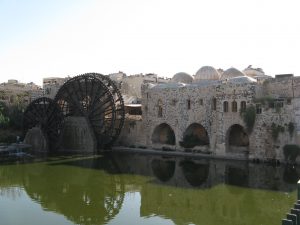
The first peace treaty
After the battle was over, both rulers spread the news of their victory; Ramses after returning to his own capital Per Ramessu, started celebrating by decorating his temple with festoons as a sign of relief. On the other hand, Muwatalli II claimed victory in their empire too. So they were not agreed about the victor of the battle, and the conclusion was undetermined. In the famous poem called “Poem of Pentaur,” Ramses II is depicted as the most courageous, well skilled, and resourceful by the grace of Amun, the great Egyptian god. Here a stereotypical masculine image of Ramses II is created in the theme of the poem. The magnificent prose of the poem is engraved in stone throughout Egypt. Extending the southern part of Great Hypostyle Hall thirty lines of Egyptian treaty and ten lines at Ramesseum were found. Ramses claimed that he won against the Hittites, although this battle was more of a draw. He wanted to enrich his reputation as a great leader, fighter, and ruler. From the walls of Karnak Temple, a small piece of the translated version of “Poem of Pentaur” is here:
“Here beginneth THE VICTORY OF THE KING OF UPPER AND LOWER EGYPT USIMARE`RE`SETPENRE`, the Son of RE`RA`MESSE-MIAMUN, given life eternally, which he achieved in the land of Khatti, Nahrin, in the land of Arzawa, in Pidasa, in the land of Dardany, in the land of Masa, in the land of Karkisha and Luka, in Charcamesh, Kedy, the land of Kadesh, in the land of Ugarit, Mushanet. Now his majesty was a youthful lord, active and without his peer; his arms powerful, his heart stout, his strength like Mont at his moment; goodly of form like Atum, one rejoices at seeing his beauty; great of victory over all foreign countries, one knows not when he will begin to fight; a strong wall about his army, their shield on the day of fighting; a bowman without his like; he is braver than hundreds of thousands combined; going ahead and entering in among multitudes, his heart trusting in his strength; powerful of heart in the hour of close combat; like a fir at its time of consuming; firm of heart like a bull ready upon the battlefield; he cares not for all lands combined; a thousand men are unable to stand firm before him; hundreds of thousands are discomfitted at beholding him; inspiring fear; loud of roarings in the hearts of all lands; great of majesty and powerful of renown like Sutekh;in the hearts of foreigners; like a savage lion in the valley of desert animals; advancing bravely and returning only when he has triumphed face to face; not speaking boastfully; effective of counsel and good of plan; one finds what one needs through his first reply; saving his army on the day of fighting; [great protector of] his chariotry; bringing home his followers and King of Upper and Lower Egypt Usimare`- setpenre`, the Son of Re`,Ra`messe-miamun, given life.”7
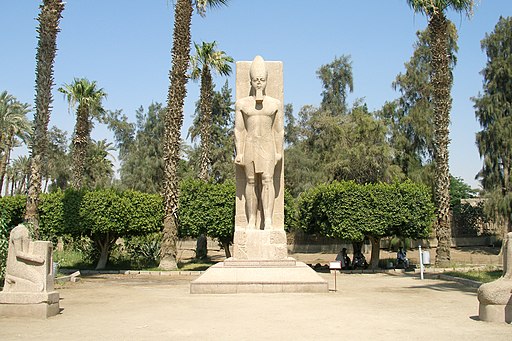
In Egypt’s imperial age, Ramses II reign is marked as the last peak. The death of Ramses brought tremendous change in the history of Egypt. Now his enormous mummy lies in the Egyptian Museum in downtown Cairo. He died approximately at the age of ninety, but his story of death perplexed many people until now, although it was found that he died because of the plague of arthritis, severe dental issues, and hardening of arteries. It is mentioned that he died at Pi-Ramesses (Qantir) of Egypt. Besides, Ramses was more well known for keeping the records of his procurement and success. Despite the fiasco of Kadesh, Ramses was sturdy and competent which made him the great god of Egypt.9
- World History Encyclopedia, January 18, 2012, s.v. “The Battle of Kadesh & the First Peace Treaty,” by Joshua J. Mark, https://www.worldhistory.org/article/78/the-battle-of-kadesh–the-first-peace-treaty/. ↵
- Salem Press Biographical Encyclopedia, 2021, s.v. “Ramses II,” by Rita E Freed; World History Encyclopedia, September 02, 2009, s.v. “Ramesses II,” by Joshua J. Mark. ↵
- “Battle of Kadesh 1274 BC (Egyptian – Hittite War) DOCUMENTARY,” video file, 10:00, YouTube, posted by Kings and Generals, September 10, 2017, https://www.youtube.com/watch?v=9b_Ab9GGb6g. ↵
- Joyce A. Tyldesley, Ramesses Egypt’s Greatest Pharaoh (Penguin Books UK 2000), 70–71. ↵
- World History Encyclopedia, September 02, 2009, s.v.”Ramesses II,” by Mark, Joshua J, https://www.worldhistory.org/Ramesses_II/. ↵
- “Battle of Kadesh 1274 BC (Egyptian – Hittite War) DOCUMENTARY,” video file, 10:00, YouTube, posted by Kings and Generals, September 10, 2017, https://www.youtube.com/watch?v=9b_Ab9GGb6g. ↵
- World History Encyclopedia, January 18, 2012, s.v. “The Battle of Kadesh & the Poem of Pentaur,” by Joshua J. Mark, https://www.worldhistory.org/article/147/the-battle-of-kadesh–the-poem-of-pentaur/. ↵
- World History Encyclopedia, January 18, 2012, s.v. “The Battle of Kadesh & the First Peace Treaty,” by Joshua J. Mark, https://www.worldhistory.org/article/78/the-battle-of-kadesh–the-first-peace-treaty/. ↵
- R. Oliver Faulkner and Peter F. Dorman, “Ramses II,” Encyclopedia Britannica, 25 October 2022. https://www.britannica.com/biography/Ramses-II-king-of-Egypt.; Peter F. Dorman and Raymond Oliver Faulkner, “Ramses II | Biography, Accomplishments, Tomb, Mummy, Death, & Facts | Britannica,” March 18, 2021, https://www.britannica.com/biography/Ramses-II-king-of-Egypt. ↵
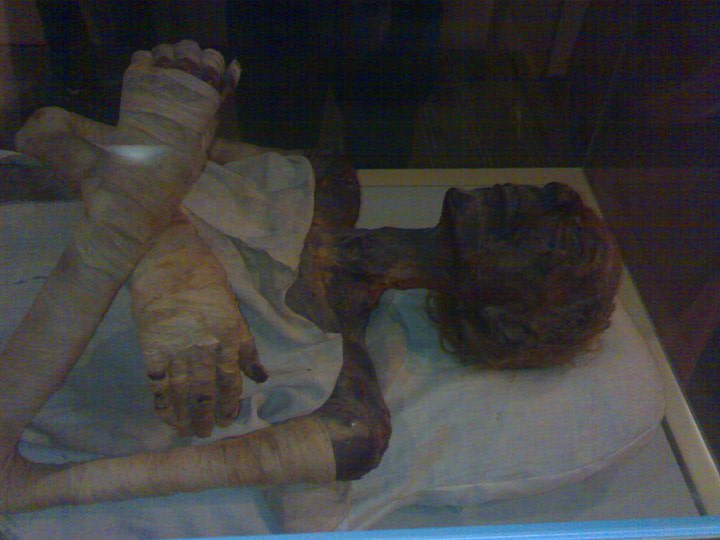

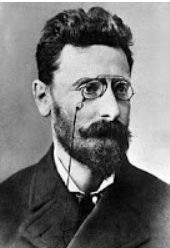

17 comments
Elliot Avigael
I recognize that mummy well. As a kid, I was obsessed with ancient Egypt and regularly read up on their practices of mummification; and Ramses II was always one of the one’s that popped up. I didn’t know much about him as a ruler though. It was cool to see that Ramses was a actually a great leader, and his military exploits against the Hittites made him famous. It was interesting to see how Ramses was motivated by his religious beliefs, too.
Priscilla Vargas
Congrats on your nomination on your very well written and informative article. I am fascinated by all things Egyptian but had not heard or read about the Battle of Kadesh. More fascinating than that though, is learning that the result of the treaty, is that it is the first historical peace treaty. Once again, congrats and well done.
Jocelyn Elias
Congratulations on your nomination. I think your article is really interesting and has a lot of details about what you wrote. From personal experience based on religion, we always hear about how rough Ramsey’s the Pharaoh was with his extremism, but I never realized the battles that he actually had to confront other than the religious aspect that we all notoriously know about, eye-opening article.
Shecid Sanchez
Congratulations on your award nomination! I really enjoyed reading your article. You provided with so much detail and that was great because I’ve never heard about Battle of Kadesh but you did a very great job explaining it. Overall great job and good luck with the nomination.
Joshua Marroquin
Congratulation on getting nominated and on publishing such a well written and informative article that talked about Egypt. I enjoyed reading the article and do reccomond other to do the same. I wasn’t aware of the battle of Kadesh, which is why I found this passage so entertaining since I learned a lot of new information about a topic, I dabble in.
Helena Griffith
I found reading this essay to be quite interesting. I believe the background and history were well-explained, and I have always been fascinated by learning about ancient Egypt. I believe that learning about the historical figures who ruled our prehistoric globe is always interesting. Ramses II’s extensive record-keeping is particularly admirable in my opinion because it has provided us with a clear picture of the time period and the events that took place.
Ana Barrientos
Congratulations on your nomination! I enjoyed reading your article, it was well researched and had so much detail! I don’t know much about the Battle of Kadesh, but I feel like I learned so much about it while reading your article. You did a great job explaining the battle and all that went into it. I also liked your main image at the top. Overall, awesome job!
Dylan Vargas
Egyptian stories are not very common on this website but I am sure happy that I read this article. The story of Ramses is very interesting to the Egyptian cultural. I never knew of any of the events of Ramses and what had happened in that culture so I am glad that I can read bout some of the stuff that conspired.
Vanessa Preciado
Nicely done ! I have not read to much about Ramsey the second. But this article has a great amount of information that I did not know about. You did a great job on giving detailed insight on the battle of ancient Egypt. Congratulations on your nominee!
Nick Liveris
I don’t usually read about Egyptian history, but this article was very interesting and engaging. Well done.